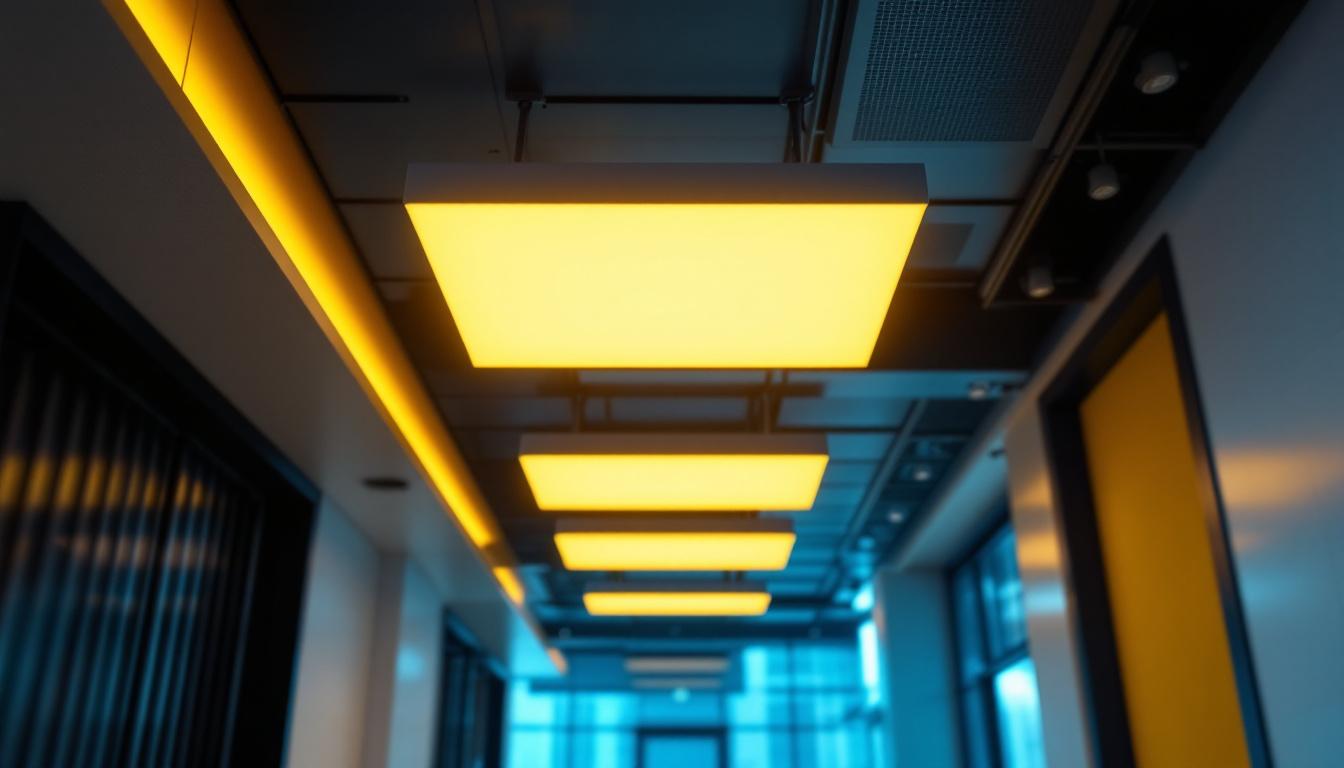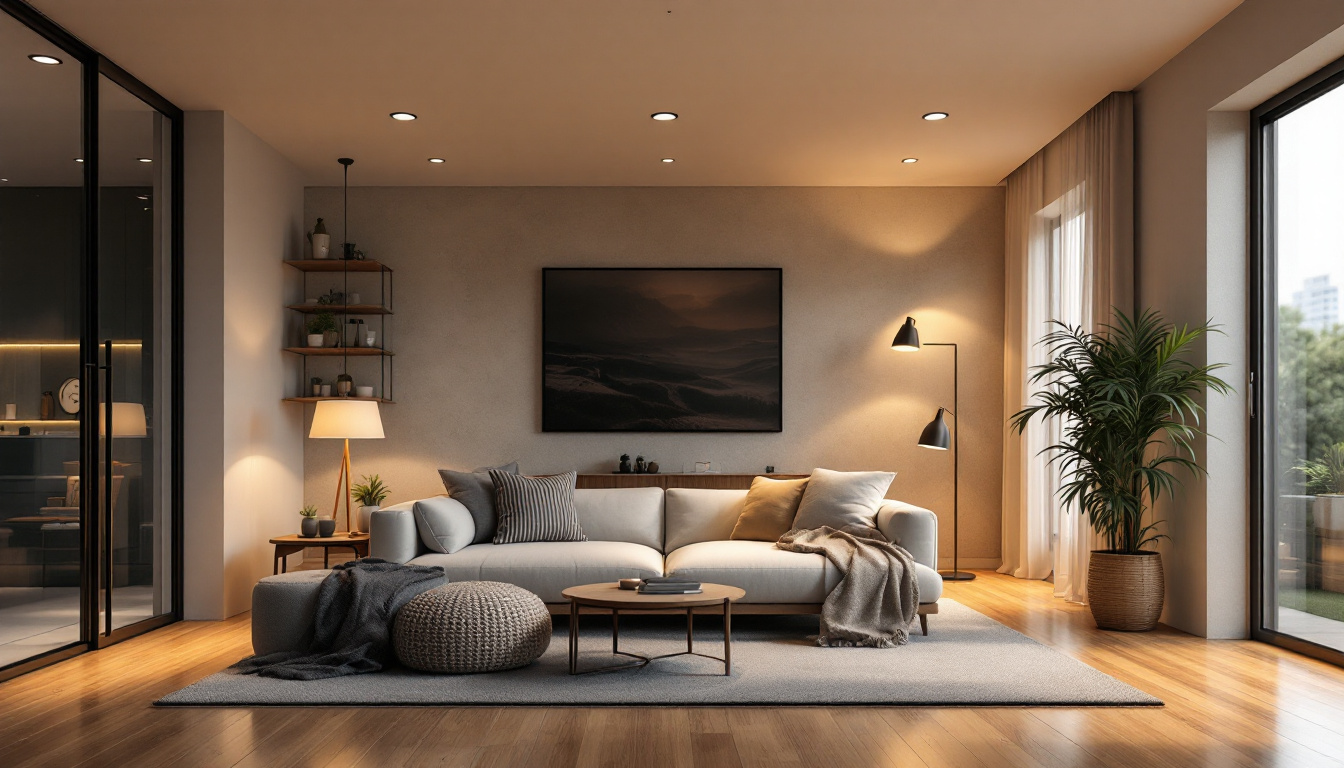
In the evolving landscape of architectural and interior lighting, suspended ceiling LED panels have emerged as a pivotal solution for modern lighting needs. These panels, designed to integrate seamlessly into suspended or drop ceilings, offer a blend of efficiency, aesthetics, and functionality that traditional lighting fixtures often struggle to match. For lighting contractors, understanding the nuances of these panels is essential to delivering superior lighting solutions that meet both client expectations and regulatory standards.
Suspended ceiling LED panels are flat, thin light fixtures that fit into the grid of a suspended ceiling. They are typically used in commercial, educational, healthcare, and office environments where uniform, glare-free illumination is critical. Their design allows for easy installation, maintenance, and replacement, making them a preferred choice in both new constructions and retrofit projects.
One of the standout features of suspended ceiling LED panels is their energy efficiency. Compared to traditional fluorescent lights, LED panels consume significantly less energy while providing the same or even superior light output. This efficiency translates into lower electricity bills and a reduced carbon footprint, making them an environmentally friendly choice for businesses aiming to enhance their sustainability efforts. Additionally, many LED panels come with dimming capabilities, allowing users to adjust brightness levels according to specific needs or preferences, further optimizing energy use.
Moreover, the aesthetic versatility of these panels cannot be overlooked. Available in various color temperatures, from warm white to cool daylight, they can be tailored to create the desired ambiance in any space. Some manufacturers even offer customizable designs and finishes, enabling architects and designers to integrate lighting solutions that complement the overall decor. This adaptability not only enhances the visual appeal of a room but also contributes to the well-being of occupants by mimicking natural light patterns, which can improve mood and productivity in workplaces and educational settings.
One of the most compelling reasons for the widespread adoption of suspended ceiling LED panels is their superior energy efficiency. Compared to traditional fluorescent or incandescent lighting, LED panels consume significantly less power while delivering the same or higher levels of brightness. This efficiency translates into substantial cost savings on electricity bills over the lifespan of the installation.
Moreover, LED panels have a longer operational life, often exceeding 50,000 hours. This longevity reduces the frequency of replacements and maintenance costs, which is particularly advantageous in commercial settings where downtime can be costly. In addition to these financial benefits, the reduced energy consumption of LED panels contributes to a lower carbon footprint, making them an environmentally friendly choice. As businesses increasingly prioritize sustainability, the use of energy-efficient lighting solutions like LED panels aligns with corporate social responsibility goals, enhancing a company’s reputation among eco-conscious consumers.
Modern LED panels provide excellent color rendering and uniform light distribution, which enhances visual comfort and reduces eye strain. This is especially important in workplaces and educational institutions where occupants spend extended periods under artificial lighting.
The panels are designed to minimize glare and flicker, common issues with older lighting technologies. Their ability to produce consistent, diffused light helps create a pleasant and productive environment, contributing positively to occupant wellbeing and performance. Furthermore, the availability of tunable white LED panels allows users to adjust the color temperature throughout the day, simulating natural daylight and supporting circadian rhythms. This adaptability not only boosts mood and energy levels but also enhances focus and productivity, making it an ideal solution for environments such as offices, schools, and healthcare facilities.
Suspended ceiling LED panels come in various sizes, shapes, and color temperatures, allowing lighting contractors to tailor installations to specific design requirements. Whether the goal is to create a bright, energetic atmosphere or a warm, inviting ambiance, these panels can be customized accordingly.
The slim profile and sleek appearance of LED panels contribute to a modern, clean ceiling design. They can be integrated with other ceiling elements such as HVAC diffusers and fire safety devices without compromising aesthetics or functionality. Additionally, the versatility of LED panels extends to their installation options; they can be recessed, surface-mounted, or suspended, providing architects and designers with the freedom to create unique lighting layouts that enhance the overall architectural vision. This adaptability not only improves the visual appeal of a space but also allows for innovative designs that can incorporate smart lighting technologies, further elevating the user experience in both commercial and residential settings.
For lighting contractors, the ease of installation is a significant factor when selecting suspended ceiling LED panels. Most panels are designed to fit standard ceiling grid sizes, typically 600x600mm or 1200x600mm, which simplifies integration into existing structures. This standardization not only streamlines the installation process but also reduces labor costs and minimizes the time required for project completion. Furthermore, many manufacturers provide comprehensive installation guides and support, which can be invaluable for contractors who may be unfamiliar with specific models or technologies.
Compatibility with dimming controls and smart lighting systems is another critical consideration. Advanced LED panels support various dimming protocols such as DALI, 0-10V, and Bluetooth, enabling sophisticated lighting control strategies that enhance energy savings and user comfort. The integration of smart technology allows for customizable lighting scenarios, which can be tailored to specific tasks or moods, making it an attractive option for commercial spaces. Additionally, the ability to integrate with building management systems can lead to further efficiencies, allowing contractors to offer clients enhanced control over their lighting environments.
Effective thermal management is essential to maintain LED performance and longevity. High-quality LED panels incorporate heat sinks and materials that dissipate heat efficiently, preventing premature degradation of the LEDs and driver components. This is particularly important in high-output applications where heat buildup can drastically affect performance. By utilizing advanced thermal management technologies, manufacturers can ensure that their products not only last longer but also maintain consistent brightness and color temperature over time, which is crucial for creating the desired ambiance in any space.
Durability is also a key concern, especially in environments prone to humidity or dust. Many LED panels come with IP ratings indicating their resistance to moisture and particulates, ensuring reliable operation in diverse conditions. For instance, panels rated IP65 are suitable for use in bathrooms or kitchens, where exposure to water is a concern. Additionally, the use of robust materials and coatings can protect against physical impacts and scratches, making these panels ideal for high-traffic areas such as schools and hospitals. Contractors should also consider the warranty offered by manufacturers, as a longer warranty period often reflects confidence in the product’s durability and performance.
Lighting contractors must ensure that suspended ceiling LED panels comply with relevant safety and performance standards. Certifications such as UL, CE, and RoHS indicate adherence to electrical safety, environmental, and health regulations. These certifications not only assure contractors of the product’s reliability but also provide peace of mind to clients who prioritize safety and sustainability in their projects. Understanding the implications of these certifications can also help contractors navigate potential legal liabilities and enhance their reputation within the industry.
Additionally, panels should meet local building codes and energy efficiency standards, which may vary by region. Compliance not only guarantees safety and quality but also facilitates client approvals and building inspections. In many areas, energy-efficient lighting solutions can qualify for rebates or incentives, making them an attractive option for clients looking to reduce upfront costs. Staying informed about the latest regulations and incentives can empower contractors to offer informed recommendations to clients, ultimately positioning themselves as trusted advisors in the lighting industry.
In commercial offices, suspended ceiling LED panels are often the default lighting solution due to their ability to provide uniform, glare-free illumination that enhances productivity. For instance, large corporate offices have successfully reduced energy consumption by integrating LED panels with occupancy sensors and daylight harvesting systems.
These integrations allow lighting levels to adjust dynamically based on occupancy and natural light availability, optimizing energy use without compromising occupant comfort.
Healthcare environments demand lighting that supports both patient comfort and clinical precision. Suspended ceiling LED panels with high color rendering indexes (CRI) are preferred to ensure accurate color perception, which is critical for medical examinations and treatments.
Similarly, educational institutions benefit from LED panels that reduce flicker and glare, creating a conducive learning environment. Studies have shown that proper lighting can improve concentration and reduce fatigue among students and staff.
Retail spaces leverage the versatility of LED panels to highlight merchandise and create inviting atmospheres. Adjustable color temperatures and dimming capabilities allow retailers to tailor lighting to different times of day and promotional events.
In hospitality settings, LED panels contribute to a modern aesthetic while providing energy-efficient, comfortable lighting for guests. Their low heat emission also helps maintain ambient temperatures, enhancing overall comfort.
The future of suspended ceiling LED panels lies in their integration with smart building systems. IoT-enabled LED panels can communicate with building management systems to optimize lighting based on occupancy, daylight levels, and user preferences.
This connectivity enables predictive maintenance, energy analytics, and personalized lighting experiences, positioning LED panels as a cornerstone of intelligent, sustainable buildings.
Research into human-centric lighting emphasizes the role of light in regulating circadian rhythms and enhancing wellbeing. Suspended ceiling LED panels are evolving to offer tunable white light, allowing users to adjust color temperature throughout the day to mimic natural light patterns.
Such advancements support health and productivity, particularly in environments where natural light is limited or unavailable.
Environmental considerations are increasingly influencing lighting choices. LED panels are inherently more sustainable than traditional lighting due to their energy efficiency and longer lifespan.
Manufacturers are also focusing on recyclable materials and reducing hazardous substances in LED panel production, aligning with circular economy principles and reducing environmental footprints.
Suspended ceiling LED panels represent a transformative element in modern lighting solutions, offering lighting contractors a versatile, efficient, and aesthetically pleasing option for a wide range of applications. Their advantages in energy savings, light quality, and design flexibility make them indispensable in contemporary commercial, healthcare, educational, retail, and hospitality environments.
As technology advances, these panels will continue to integrate with smart systems and human-centric lighting strategies, further enhancing their value and impact. For lighting contractors, staying informed about these developments and understanding the technical and regulatory aspects of suspended ceiling LED panels is crucial to delivering cutting-edge lighting solutions that meet the evolving demands of clients and end-users.
Ready to elevate your lighting solutions with the efficiency, quality, and design flexibility of suspended ceiling LED panels? Look no further than LumenWholesale, where we provide contractors with spec-grade lighting products at unbeatable wholesale prices. Say goodbye to inflated markups and hello to a vast selection of industry-standard, high-performance lighting for every application. With free shipping on bulk orders, you can trust that you’re getting premium lighting at the best value — without any hidden fees. Make your next project shine and experience the best in wholesale lighting with LumenWholesale.

Discover the ultimate guide for lighting contractors on motion detector switches with timers.

Explore the pros and cons of 6 recessed LED downlights compared to alternative lighting options.

Discover the top challenges lighting contractors face when installing wall switches for ceiling fans and lights.

Discover effective strategies for lighting contractors to tackle common challenges when working with 40 Watt Type B bulbs.